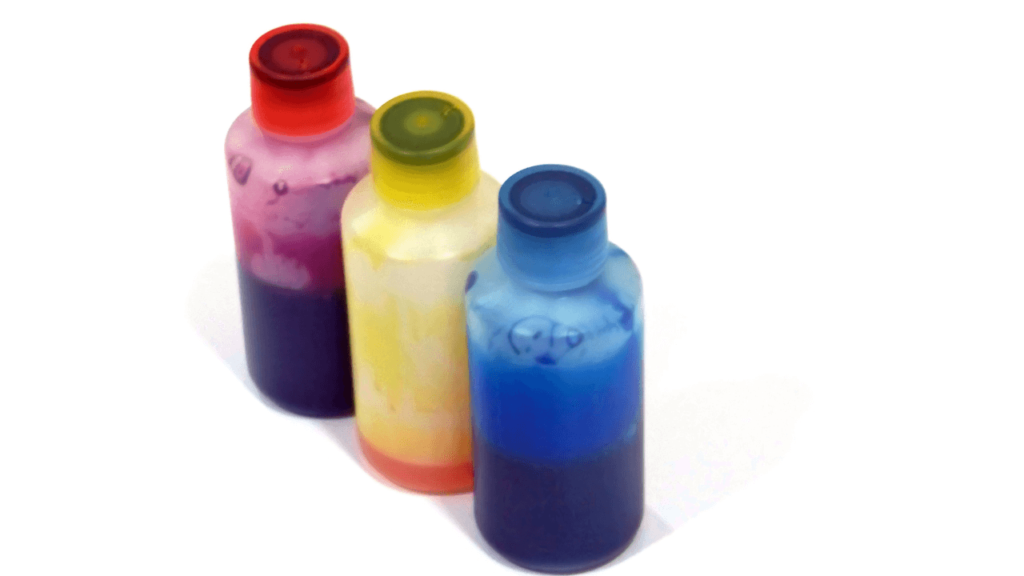Many people around the world rely on printers every day. Students use printers to submit hard copies of their essays, papers, and other schoolwork, while businesses print all sorts of contracts, receipts, and other official documents. Many businesses also invest in printing services in Manila for their marketing materials.
But if you’re shopping for a printer for your own personal or commercial use, you’re likely to come across this term: inkjet printing.
Inkjet printing is a type of digital printing that recreates digital images by spraying microscopic ink droplets onto paper.
What are Inkjet Printers?
Inkjet printing uses inkjet printers to print documents and other printed materials. Inkjet printing was first seen in the early 1950s. By the late 1970s, inkjet printers could produce digital images that were generated by a computer. The invention of inkjet printing is not credited to a single inventor as the charge was led by numerous companies such as Canon, HP, and Epson. The HP Inkjet is attributed as the first mass-marketed inkjet printer intended for personal use.
Inkjet printers were also developed by IBM, which used electrically charged droplets to quickly coat pages with ink. However, it ended up in a lot of ink wastage. The technology never caught on with the public although it is continually used in industrial settings for addressing direct mail and labeling cartons.

How Does an Inkjet Printer Work?
In inkjet printing, the printers spray thousands of microscopic ink droplets onto a piece of paper or substrate where the colors are mixed or combined to form an image or text. How inkjet printers work is similar to the way computer and TV screens render images through clusters of thousands of pixels. The sizes and colors of these droplets can be changed or altered to produce sharp and photo-realistic images. The piece of paper or substrate is fed through a set of rollers. The print head then moves back and forth, spraying the ink precisely across the substrate. This technique is much simpler compared to laser printing, though it can also easily lead to smudging.
To gauge an ink printer’s resolution, users can look at the dots per inch (DPI) advertised by the manufacturer. The DPI measurement will tell you the number of tiny droplets that can fit along a single inch on the page. The higher the DPI, the better as it means that the printer makes smaller individual dots. This results in clearer, sharper, and brighter images.
Inkjet printers, and inkjet printing in general, is a popular choice for home printing needs. Cartridges for inkjet printing are usually sold in cyan, magenta, and yellow colors. Together, these three primary colors can be combined or mixed by the printer to come up with the necessary colors for the print job.

Advantages of Inkjet Printing
The unique technology of how inkjet printers work has many advantages that have propelled these printers into commercial popularity. Innovative technology has also helped improve the capabilities of inkjet printing.
Here are the top benefits of inkjet printing:
Image quality
The main reason that many experts would agree for investing in a good inkjet printer is the image quality. Inkjet printing technology allows for the precise positioning of ink dots with resolutions as high as 1440×1440 DPI. A higher DPI means better color quality and a more accurate replication of the image. It also results in better color reproduction and shading. This makes for extremely high-quality images with lifelike results on different types of paper.
Image color
With better color comes better quality. With how inkjet printers work, the technology enables you to reproduce incredibly bright and vivid colors with exceptional shading and tone. Many manufacturers also improve inkjet color by continually developing better ink and technology.
Low initial cost
If the quality of images isn’t necessarily at the top of your printer priorities list, price is probably a huge deciding factor. Whether you plan on using inkjet printing at home or the office, everyone likes to find the most cost-effective options when shopping for a printer.
One of the major reasons why inkjet printing has become so popular over the decades is due to their attractive price points. Inkjet printers, even those with improved quality and advanced capabilities, are often cheaper than laser printers, offering exceptional value for money. If you simply don’t want to spend a lot or you want the best value for your budget, inkjet printers offer the perfect balance between price and good quality.
Speed
While speed is not often associated with inkjet printing, inkjet printers still possess surprising advantages when it comes to quick operations. They usually have little to no warm-up time and are able to receive and start printing materials in a short amount of time.
Overall size
An inkjet printer is a more compact option compared to laser printers. Even the latest inkjet printing machines that offer multi-functionality and A3 printing are conveniently small. If space is a major concern and you want to look for a user-friendly printer with minimum fuss, inkjet printers are both compact and easy to use. For instance, if you’re in the process of learning how to print stickers for your humble yet thriving online store, an inkjet printer is good enough to print labels for your product packaging.

Who Uses Inkjet Printing?
Now, you know what inkjet printers are and how inkjet printers work.If you’re still unsure whether an inkjet printer is the best choice for your printing needs, here’s a glimpse of people who frequently use inkjet printers.
Photographers
It’s not at all surprising that the most popular use for inkjet printing is photography. It doesn’t matter whether you’re a hobbyist looking to print your photographs for your own pleasure or a professional looking for a high-quality printer for your business. With eye-catching colors and stunning images, today’s inkjet printers can print borderless images up to size A2. Many manufacturers also develop printers that are compatible with different paper types, including glossy photo paper to highlight the best aspects of your images.
Families
As inkjet printing devices are both compact and affordable, they’re understandably the go-to printers of homes and families around the world. Reasonable prices mean students and families alike can afford the versatile multifunction printers without blowing a hole in their wallet. Plus, these small printers can fit perfectly on desks, cabinets, and shelves. Of course, the stunning photo quality they offer is also perfect for school projects and printing memorable family photos.
Businesses
The advanced paper handling and stellar color quality provided by inkjet printing make it perfect for business graphics, client projects, and in-house marketing materials. Admittedly, its slower print times (compared to laser printing) and the price of ink cartridges have previously seen inkjet printing shunned in favor of its laser counterpart. However, with inkjet printing making quick advancements, all of these are changing at a rapid pace.
Since inkjet printing doesn’t need a warm up time, they’re easier and more convenient to use in office settings. Plus, there are new innovations in inkjet printing such as the Epson EcoTank range that offers significant cost savings. Their cost-efficient ink tank system is easy to refill. You can see up to 74% in cost savings alongside lower per-page costs.
Inkjet Printing vs. Laser Printing: Which One’s Better?
As always, our last section is a discussion. After all, we’ve tackled debates in our previous articles, including ones that tackle the differences between offset and digital printing.
To cap off our in-depth exploration of inkjet printing, let’s compare it with its direct competition: laser printing. Earlier, we discussed how inkjet printers work. Laser printers essentially operate in the same way except it uses a laser to print images and text.
However, additional differences between the two exist that can lead to discrepancies in speed, image quality, and functionality. Based on your needs, you may favor one type of printer over the other.
Laser printers are ideal for those who:
- Require durable printers with a large print capacity.
- Print high volumes of documents, specifically in black and white.
- Do not need photo prints that need to be gallery-level in quality.
- Need a long-term office printer. As laser printers tend to be bulky and heavy, they’re not exactly suitable for home use.
Keep in mind that toner cartridges are also more expensive than cartridges used for inkjet printing. However, they last much longer, which would explain the expensive upfront price.
Inkjet printers are ideal for those who:
- Need images to be in excellent quality as inkjet printing produces images with better tonal variety and blending.
- Print on a wide range of paper types. Laser printers cannot print on heat-sensitive substrates, limiting the types of paper you can use.
- Don’t print that often as inkjet printers tend to be slower and their paper trays cannot hold as much paper.
If you have lower print volumes and prioritize high-quality images, an inkjet printer will easily meet all your needs.
Inkjet Printing: Modern-Day Printing Convenience
Whether you’re a business owner, a photographer, or a student – inkjet printers will solve a wide range of your printing needs. As long as image quality and color are your main priorities, you’ll never go wrong with inkjet printing. Even budget ink printers offer affordable yet quality printing that will showcase your projects in the best possible light.


